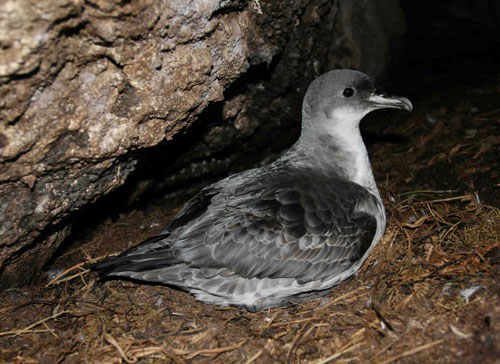Research on albatrosses and petrels on French Possessions in the southern Indian Ocean has been conducted for a number of decades, and for some species, for half a century. Field work has been conducted on all three island groups, Crozets, St Paul-Amsterdam and Kerguelen, where together at total of 12 ACAP-listed species breed.
Much of the current research is conducted by ornithologists based at the Centre d'Etudes Biologiques de Chizé (Chizé Centre for Biological Studies), part of the CNRS (the French National Centre for Scientific Research). Research at the CEBC focuses on understanding the ecology of wild animals in their natural environments, including in the sub-Antarctic.
A chronological list of its publications is available on the CEBC web site, with downloadable PDFs available for many of the more recent papers.
Four 2009 publications by Karine Delord, Virginie Rolland and their colleagues at the CEBC variously address the impacts of fisheries, climate and disease on adult survival and breeding success of populations of Indian Yellow-nosed Albatrosses Thalassarche carteri on Amsterdam Island, of Black-browed albatrosses T. melanophris on Kerguelen and of White-chinned Procellaria aequinoctialis and Grey P. cinerea Petrels in the French Exclusive Economic Zones around the Crozet and Kerguelen island groups.
Information on theses awarded to CEBC students who have studied ACAP-listed seabirds may also be found on the Centre's web site (for an example click here).

References:
DELEORD, K., GASCO, N., BARBRAUD, C. & WEIMERSKIRCH, H. 2009. Multivariate effects on seabird bycatch in the legal Patagonian toothfish fishery around Crozet and Kerguelen Islands. Polar Biology DOI 10.1007/s00300-009-0713-3. http://www.springerlink.com/content/c388738701382234/fulltext.pdf?page=1
ROLLAND, V., BARBRAUD, C. & WEIMERSKIRCH, H. 2009. Assessing the impact of fisheries, climate and disease on the dynamics of the Indian Yellow-nosed Albatross. Biological Conservation 142: 1084-1095. (PDF)
ROLLAND, V., NEVOUX, M., BARBRAUD, C. & WEIMERSKIRCH, H. 2009. Respective impact of climate and fisheries on the growth of an albatross population. Ecological Applications 19: 1336-1346. (PDF)
ROLLAND, V., WEIMERSKIRCH, H. & BARBRAUD, C. 2009. Relative influence of fisheries and climate on the demography of four albatross species. Global Change Biology DOI 10.1111/j.1365-2486.2009.02070.x. http://www3.interscience.wiley.com/journal/122597991/abstract?CRETRY=1&SRETR=0

John Cooper, ACAP Information Officer, 4 January 2010

 Français
Français  English
English  Español
Español